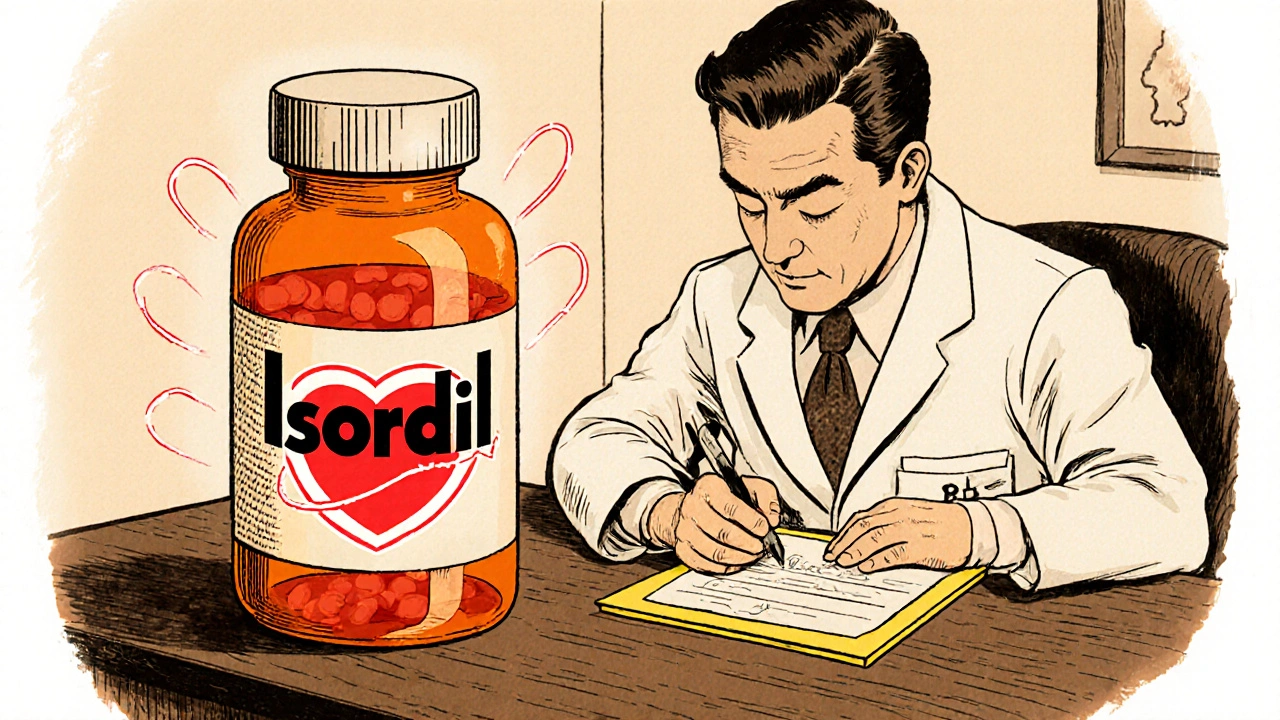nitrate medication – everything you need to know
When working with nitrate medication, drugs that release nitric oxide to relax blood vessels and reduce heart workload. Also known as nitrates, it nitrate medication is a core part of cardiovascular therapy. The class includes nitroglycerin, a fast‑acting agent often given under the tongue or as a patch to relieve chest pain and isosorbide dinitrate, a longer‑acting oral tablet used for chronic angina management. Both are vasodilators, substances that widen blood vessels, lower blood pressure, and improve blood flow to the heart muscle. Because they expand vessels, nitrate medication encompasses treatment for angina, the chest pain that occurs when the heart doesn't get enough oxygen, and can also help in acute heart failure where reducing cardiac strain is critical. These drugs require a prescription, so safe use starts with a doctor’s assessment of heart health, current meds, and lifestyle. The mechanism of action—converting to nitric oxide—means that nitrate medication needs to be stored away from heat and light to stay effective. Understanding how nitroglycerin works within seconds, while isosorbide dinitrate builds up over hours, lets patients match the right product to the right situation, whether it’s a sudden attack or long‑term prevention.
Key considerations for nitrate medication use
Choosing the right form—tablet, sublingual spray, patch, or ointment—depends on how quickly relief is needed and how often symptoms occur. For occasional chest pain, sublingual nitroglycerin offers rapid relief, often within minutes, while a transdermal patch provides a steady dose that can last 24 hours, reducing the frequency of dosing. However, tolerance can develop if the medication is taken continuously without a nitrate‑free interval, so clinicians often schedule drug‑free periods each night. Side effects like headache, flushing, and low blood pressure are common because vasodilation affects the whole body, not just the heart. A major safety rule is to avoid mixing nitrate medication with phosphodiesterase‑5 inhibitors such as sildenafil; the combination can cause dangerous drops in blood pressure. Monitoring blood pressure and heart rate after starting therapy helps catch any adverse response early. Patients should also be aware of drug interactions with antihypertensives, certain antibiotics, and alcohol, all of which can amplify the blood‑vessel‑relaxing effect. Proper education on dosing intervals, storage, and recognizing warning signs—such as severe dizziness or a pounding headache—ensures that nitrate medication delivers its benefits without unnecessary risk. By tying together the pharmacology of nitroglycerin and isosorbide dinitrate, the role of vasodilators in angina management, and practical safety steps, you’re now equipped to discuss these options with your healthcare provider and make informed choices about heart health.

